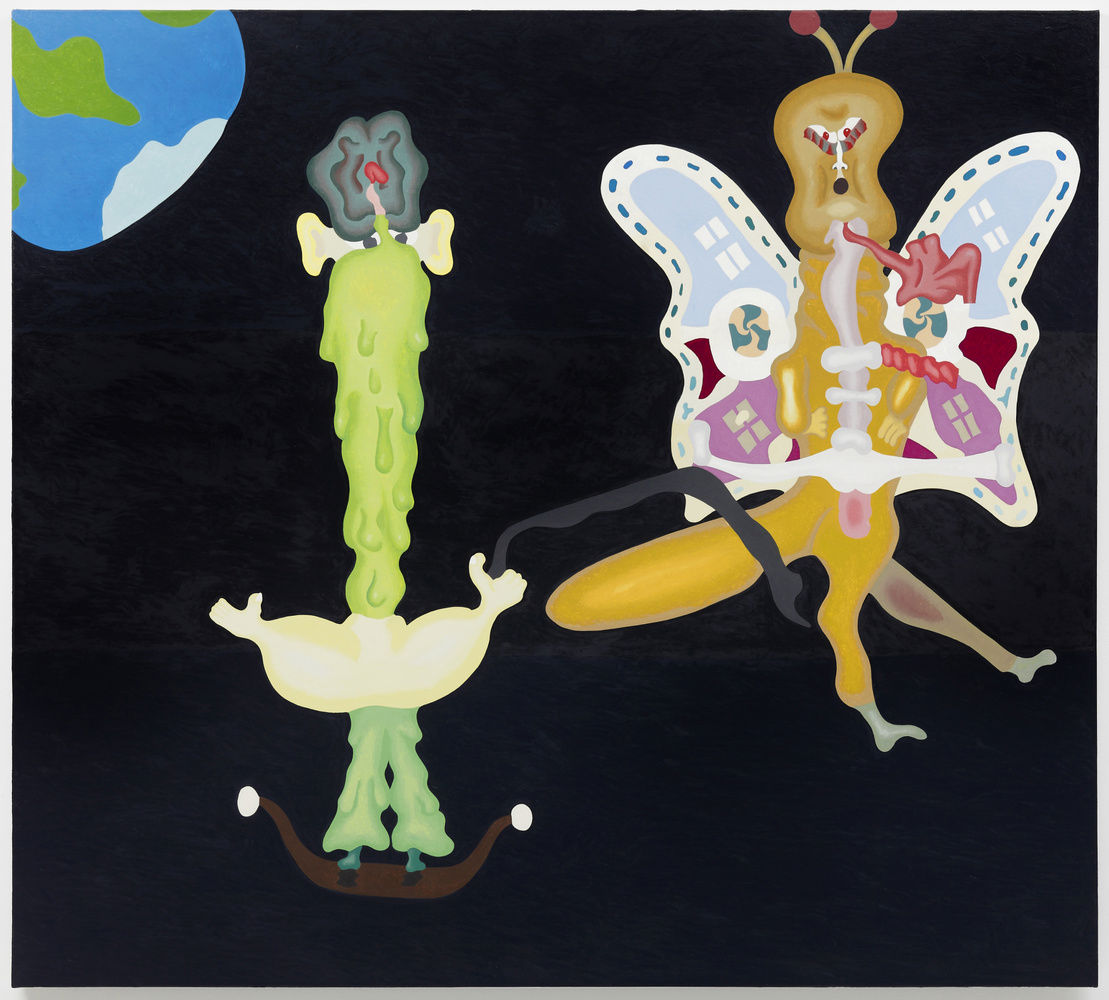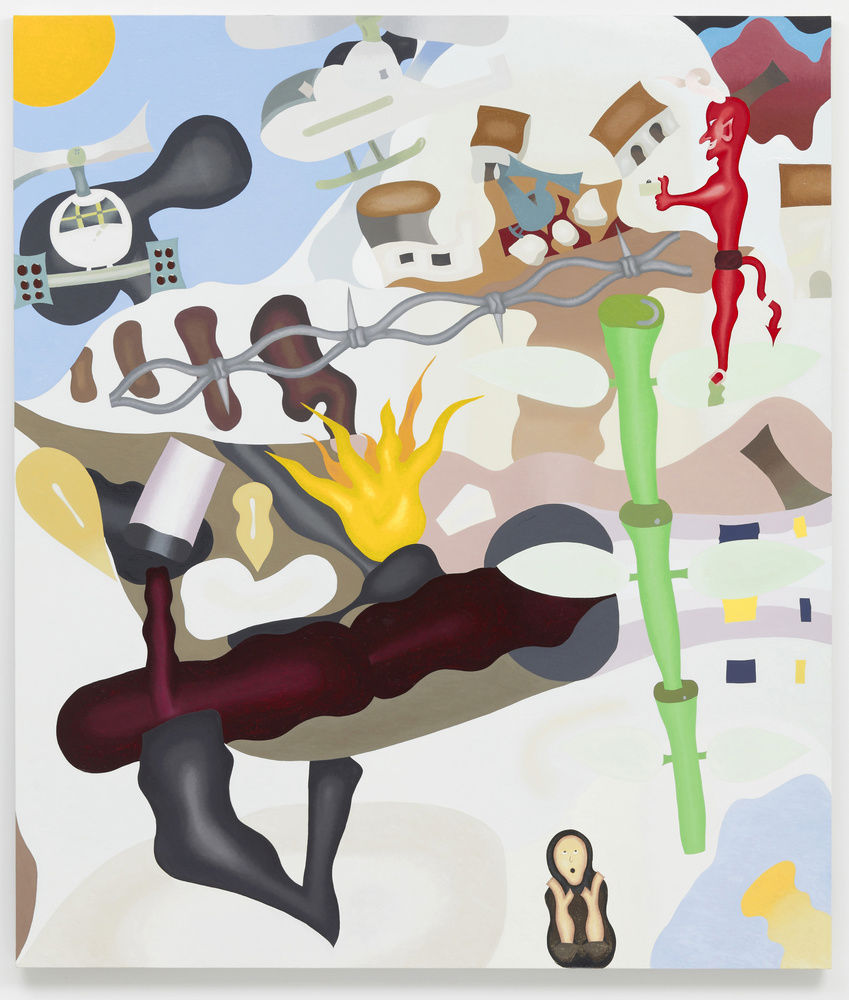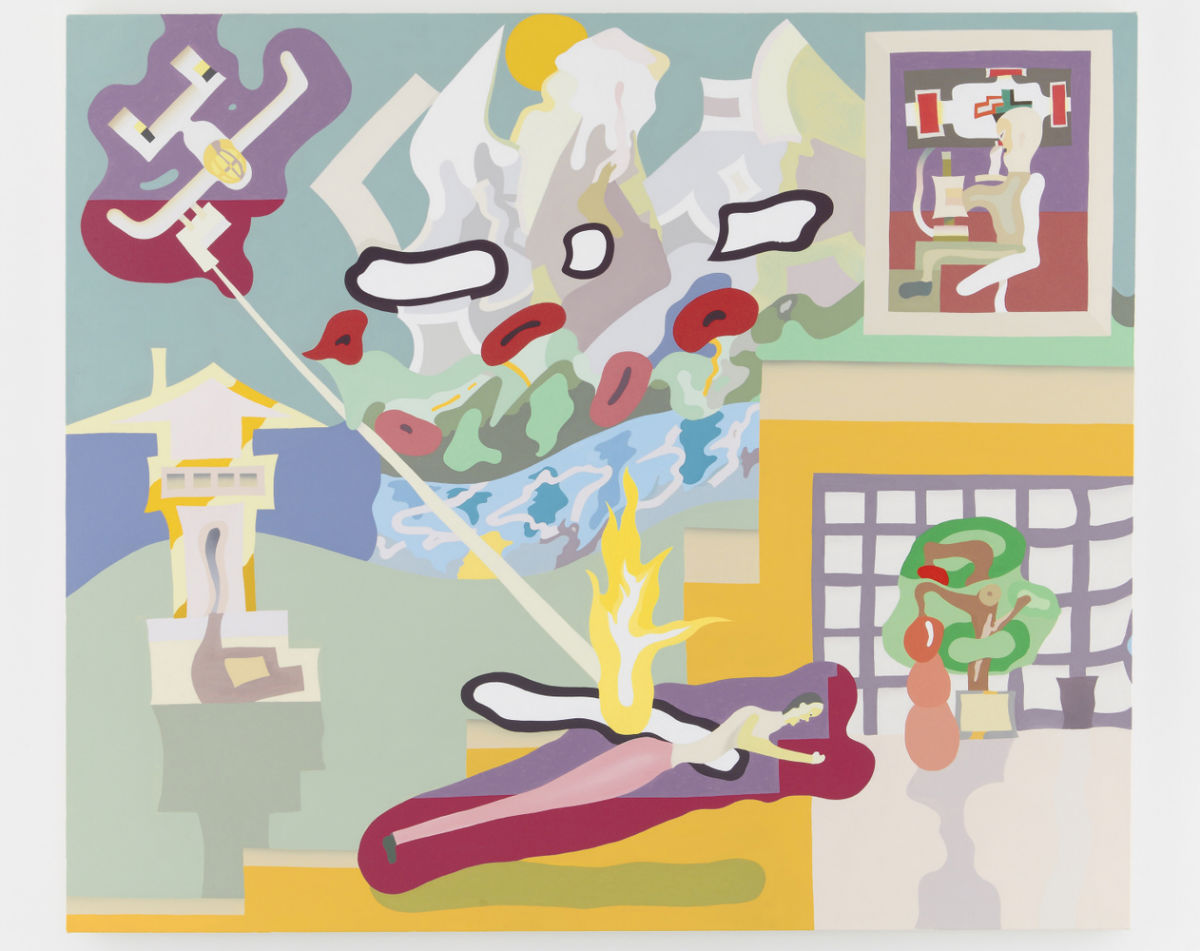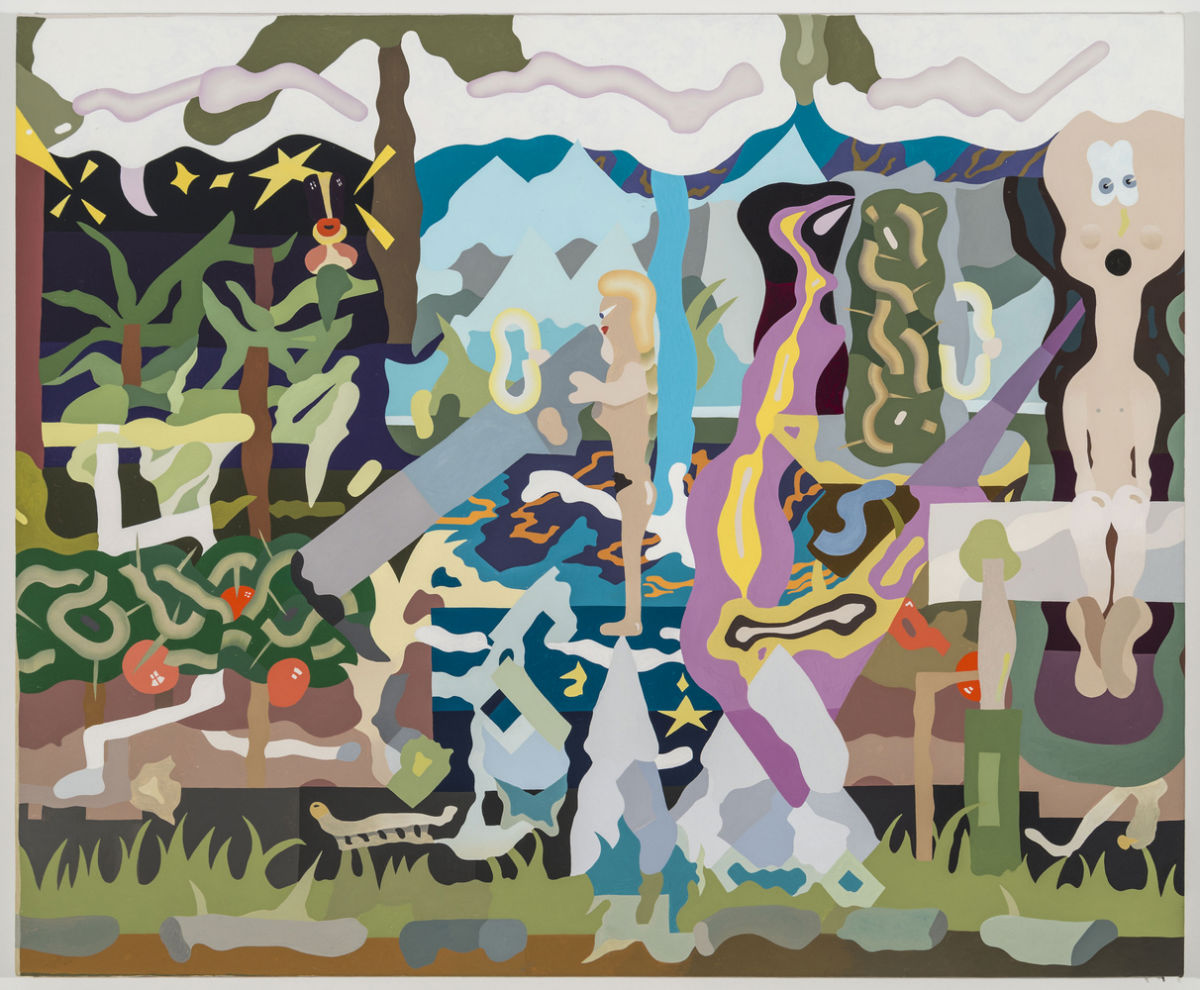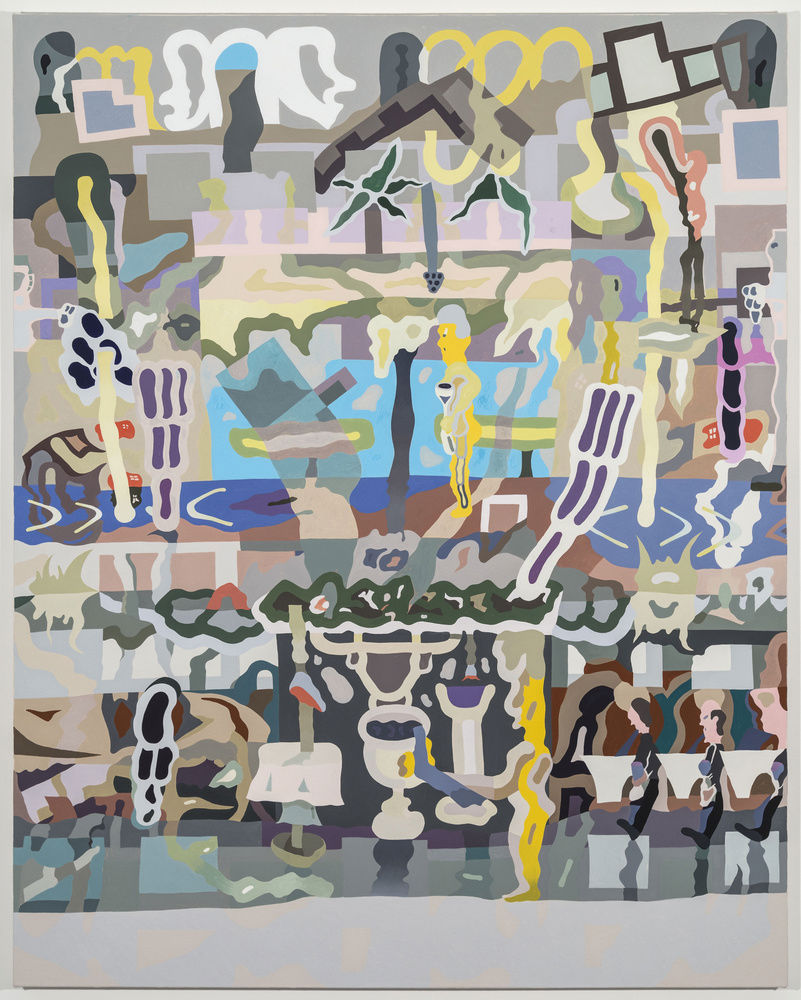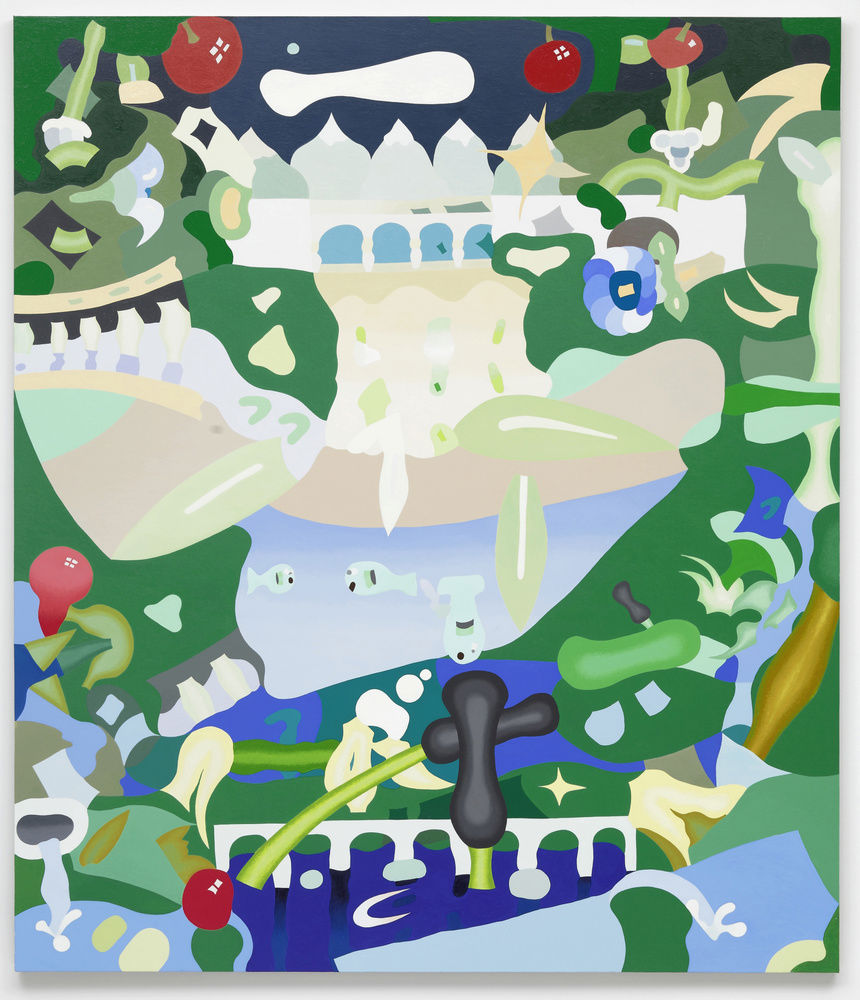The camaraderie of local galleries, a supportive community and the affordable rent of San Francisco in the ’90s and early ’00s created a fertile ground for artists. At the end of that timeline, Keegan McHargue emerged and began to introduce his work locally and, in a short time, his work was coveted beyond a Bay Area audience, flourishing in some of New York’s most influential galleries like Rivington Arms and Deitch Projects.
Not long after, the Wall Street Journal published an article entitled “The (23-Year-) Old Masters” not only including McHargue’s work, but opening the piece with his profile. Untrained, but galvanizing eager buyers, the young painter entered into the art world with a speedy stamp of approval.
Now in his thirties and residing in New York, McHargue hasn’t slowed down. He has continued to exhibit work continuously every year since his arrival, evolving and refining his visual dialect via paintbrush, with the occasional piece constructed in clay. Enthusiastic about creating, discovery, and life in general, McHargue summarizes his process of exploration and application, “Everything I do is part of a single practice, and it’s through exploration that it becomes well rounded. The more I explore, the larger my vision can become. One has to stay open to the idea that revelation can come from unlikely places. But even though I’m moving fluidly through these various media, I tend to apply everything back to my painting in the end.” —Austin McManus
Austin McManus: Would it be accurate for me characterize you as a self-proclaimed anarchist?
Keegan McHargue: Ha! No. I’m voting for Bernie.
Well, I know you feel strongly about your political beliefs. How do you incorporate these elements into your work, and do you find it to be a dicey subject matter for art in general?
Of course it is. The act of making art is a political gesture unto itself. The power of technology, the prison industrial complex, the suffering of animals, pet ownership, corporal punishment, and capital punishment are all ideas I’ve incorporated into past works. Sometimes I smash several ideas together into a single piece. Why not? It’s my own provocateur’s history, but it’s gotten me in trouble before, and there have been times when galleries haven’t shown certain pieces for fear of offending their clientele.
With no formal education in painting, was there anyone in particular who helped you develop your skill set? Did persistence and practice refine your craft?
Definitely. My family and my partner, Carol. If I’m not painting, I’m thinking about painting. I don’t think a person can elevate their craft fully without persistence, a certain level of obsession, and the right people at their side. I was lucky to grow up in an artistic household, and my family has always encouraged me from a young age to focus on my art. We did little exercises together where I would draw things both right-side up and upside-down, and they would always buy me pads of really large paper, which I think helped me to start thinking compositionally. Most importantly, though, they gave me encouragement and support to follow this path, and I think that is rare in a world where kids are often steered towards practicality. In a way, making art is like learning a language, and I think putting in all those hours so early in life was invaluable. It gave me a way to find my identity.
You started exhibiting your work and receiving a good deal of attention at a pretty young age. Do you think it was beneficial to begin showing when you were young, learning how everything operates and getting your name out?
One thing that makes art unique is that everyone’s path is so different. Even before the shows you mentioned, I was a teenager taking my work around to galleries in Portland. I’ve always wanted to show my work. Making art and showing it are two different things entirely, but I’ve always admired anyone willing to put something out into the world and I’ve always felt comfortable being myself through my work.
You’ve mentioned some great spaces, run by people who truly love art. Not just that, they have built whole communities around themselves that foster creativity and support, and so, are more than just commercial spaces. I will forever be grateful to each of them for giving me shows when my work was in its infancy, and I was the baby on the block. A lot of people really helped me along, especially at the beginning. I'm talking about a time when I didn't have as much as a single JPEG of my work or a line on my bio. I have to give thanks to Mirabelle and Melissa from Rivington Arms, who gave me my first solo show in New York.
That first solo show, Wolfman Cometh, seemed like a big break for you. Having evolved so much since then, how do you look at that body of work made when you were only 20 years old?
All we can do in this life is evolve. Early on, my work came completely out of my imagination. It was almost like I had no other option but to make art with all of these images I had stirring around my mind. I didn’t think about my work in connection to the world we live in at all. I was just making it. These days, ideas come to me more from the outside, and my work is much more reactionary, in a way. It’s like now I think of the act of making art as something political.
Your work is brightly colored, clean, and childlike with storybook features, but at the same time has dark, chaotic and aggressive undertones as well. Is there a game of continual tug of war between the two?
My work is dead-serious, and I'm not sure people really understand that. I think about painting as me doing my part to try and make sense of this increasingly complicated world. It's my job to get rough sometimes. But I also love beauty. A big part of my practice is putting all of that realness into a pretty surface that invites people in. Rift, for example, a painting about the Fukushima disaster, at first glance is an up-tempo picture with a pretty palette and glossy gleam. It doesn’t thrust itself in your face and push an agenda, but if you explore the piece further, you can see how I’m trying to decode and understand the event. In a way, I think the tug of war you describe is a testament to the fairness of my work.
----
Read the full interview in the March, 2016 issue of Juxtapoz, on sale here.

